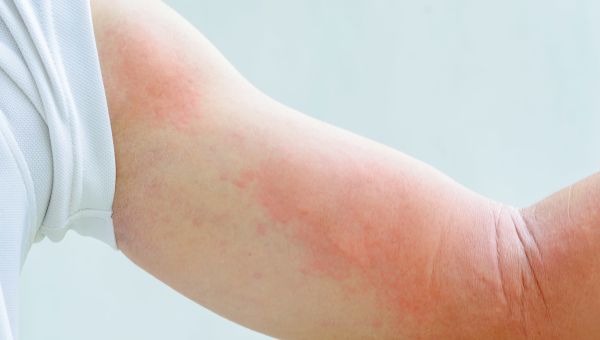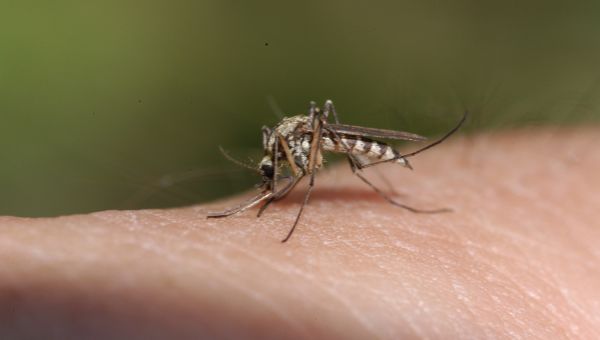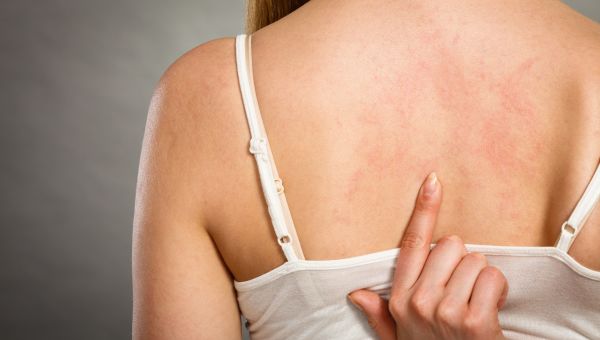6 all-natural ways to protect your skin in Hawaii
From sunburns to melasma, here's how to beat the heat.

Hot, humid, tropical weather can lead to major skin problems. Too much time in the sun can cause sunburns and sun damage. While working out in the heat can lead to uncomfortable chafing.
It’s important to be proactive when it comes to taking care of your skin in the heat. Dermatologist Joel Cohen, MD, of Sky Ridge Medical Center in Lone Tree, Colorado, offers some tips so pesky skin issues don’t put a damper on your fun.

Sunburns
When your skin isn’t protected by sunscreen or clothes, or you’re out in the sun for too long, you can develop a sunburn or suntan. Melanin, the pigment that gives your skin its color, is made naturally by your body. Melanin typically protects the deepest layers of your skin from the sun, but if your skin is exposed to the sun, your body makes more melanin to help ward off damage. This extra production darkens skin. Dark-skinned people turn a darker shade of brown and those who have lighter skin and less melanin turn red or burn. And remember, just because you’re not burnt doesn’t mean you don’t have skin damage. A suntan means you have skin damage too, which can cause skin cancer down the road.
Always wear a hat (not a visor) and always wear sunscreen, says Cohen. Look for a daily sunscreen that contains zinc or titanium dioxide and protects against UVA and UVB rays. Sunscreens that have an SPF of 30 or higher work well, especially if you’re planning on being out in the sun for a significant amount of time. Even if you’re only in the sun for a few minutes, an SPF of at least 15 is recommended. Remember Hawaii has recently banned sunscreens that contain oxybenzone or octinoxate, since these chemicals can be harmful to coral reefs. The ban does not go into effect until 2021, but if you plan to take a dip in the ocean, it’s a good idea to use reef-safe sunscreen.
If you do get a sunburn, here are some things that can help:
- Put a cool, damp towel on the burn for 10 or 15 minutes a few times a day to relieve the pain
- Always use a moisturizer with aloe vera after you get out of the shower
- Stay hydrated by drinking lots of water

Melasma
Blotchy, brownish-gray skin patches that can appear on the cheeks, nose, forehead, chin and upper lip after sun exposure is known as melasma. People who have darker skin or have a family history of melasma are more prone to the skin condition.
Experts aren’t exactly sure what causes melasma, but it occurs when melanocytes, or the skin cells that make color, produce too much color. Exposure to ultraviolet (UV) light, hormone replacement medications, birth control pills, pregnancy and certain skin care products are believed to be triggers.
If you do have melasma, it will often fade away on its own, or if you stop taking medications that may be causing it, limit your sun exposure or stop using irritating products. If it doesn’t, hydroquinone, tretinoin or corticosteroids may be prescribed to help lighten up the skin. If the creams and gels don’t seem to do the trick, procedures like chemical peels, microdermabrasion or laser treatments can clear up patches.
Prevent melasma by wearing sunscreen, wide-brimmed hats and sunglasses when you’re going outside. Avoiding harsh skin care products and waxing can also decrease the risk. When choosing skincare products, opt for picks that don’t sting or burn when you apply them.

Chafing
Irritated skin can lead to chafing, or sore, red skin. Chafing typically occurs when the skin is continuously rubbing up against clothing or other items and is especially common if you’re running or walking outside in the heat. The most common spots for chafing are nipples, legs, crotch area and under arms.
“If you’re running for hours, your shirt or even the fabric of your sports bra can rub up against your skin and be pretty irritating,” says Cohen. There are some preventative measures you can take, says Cohen.
- Apply petroleum jelly or ointment to chafing-prone areas and cover with a soft bandage.
- Keep your body moisturized.
- Wear loose, but not too loose, moisture-wicking clothing (socks, too!) and avoid wearing cotton. You want a proper fit.
- Make sure your shoes fit properly.

Mosquito Bites
Most everyone will get bitten by a mosquito at some point in their lives, but some people are more prone to mosquitos than others. “From a fragrance perspective, whether it’s your body’s own fragrance or some of the things that you wear, you may notice you’re more prone to mosquito bites,” says Cohen.
Mosquitos tend to lurk around standing water, so always dispose of the standing water in your potted plants, gutters and other outdoor items. If you have a swimming pool, stay on top of chemical treatments and make sure the water is circulating. When you head outdoors, wear an insect repellent with DEET, picaridin, IR3535 or lemon eucalyptus oil. Wear long sleeves and pants when you can, too.
If you do get a bug bite, don’t scratch it. “If you scratch it to the point of irritation, you can get into an itch-scratch cycle which will cause more swelling,” says Cohen. If you can’t stop picking at it, try covering your bite with a bandage. If your bites are really bothering you, calamine lotion or hydrocortisone creams can help minimize the itching.

Heat Rashes
In hot, humid temperatures, you can develop heat rashes. When blocked pores trap sweat under the skin, a rash can develop. Also known as miliaria, heat rashes tend to look and feel like blisters or red lumps and may itch or feel prickly. It’s common to get heat rashes in areas where your skin and clothes come together and cause friction.
Heat rashes normally go away on their own after cooling down and avoiding further exposure to heat. Prevent heat rashes by wearing loose, moisture-wicking clothing when outdoors and make sure you’re in the air conditioning as much as possible. When you come inside from the heat, try showering with cool water and letting your skin air dry. If your skin feels warm, itchy or irritated, calamine lotion and cool compresses can help relieve the discomfort.

Polymorphous Light Eruption
Photosensitivity disorders, otherwise known as sun allergies, are multifactorial, says Cohen. There are different types and they all have slightly different symptoms.
The most common is polymorphous light eruption (PMLE). Most cases of PMLE consist of a rash on your arms, and the lesions usually heal without scarring in about 10 days. The irritation can cause redness and itching, and in rare cases, nausea and headaches that appear as early as 30 minutes after sun exposure. The rash is normally a cluster of bumps and blisters, that may be raised and rough-feeling.
The skin typically adapts with repeated sun exposure, and light sensitivity will decrease, a process known as hardening. This means your skin is getting more used to the sun, says Cohen.
If you’re prone to this light-sensitive condition, it’s best to avoid the sun between 11 a.m. and 3 p.m. If your PMLE is painful, see your dermatologist. You may need a corticosteroid cream or pill, and to prevent future outbreaks, phototherapy, a process that can decrease your skin’s sensitivity to light.
More On


video

slideshow


video


video
